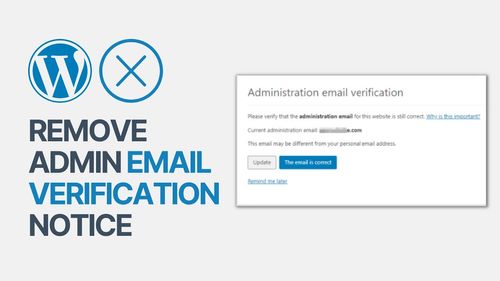Are you a WordPress enthusiast who wants to simplify the user registration experience on your website? One common step that can sometimes hinder the process is email verification. In this extensive guide, we'll explore various techniques and methods to disable email verification in WordPress, ensuring a smoother onboarding process for your users.
Chapter 1: Understanding Email Verification in WordPress
- The Purpose of Email Verification: Why WordPress employs email verification for user registration.
- Pros and Cons: The benefits and potential drawbacks of email verification.
- When to Disable Email Verification: Situations where disabling it makes sense.
Chapter 2: Disabling Email Verification in WordPress: The Manual Way
- Editing WordPress Files: How to modify WordPress core files to disable email verification.
- Functions.php Tweaks: Using functions.php to customize user registration.
- .htaccess Hacks: Disabling verification with .htaccess rules.
Chapter 3: Using WordPress Plugins to Disable Email Verification
- Popular Plugins: A rundown of plugins that simplify the process.
- Installation and Configuration: Step-by-step guides for installing and configuring the best plugins.
- Pros and Cons of Plugins: Understanding the implications of using plugins.
Chapter 4: Customizing Registration Forms
- WordPress User Roles: The role of user roles in email verification.
- Custom Registration Forms: Building custom registration forms that exclude email verification.
- Third-Party Form Builders: Utilizing third-party form builder plugins for customized registration.
Chapter 5: Security Implications
- User Security: Exploring the potential security risks of disabling email verification.
- Alternative Security Measures: Implementing alternative security measures to compensate.
Chapter 6: Handling WooCommerce and Email Verification
- Email Verification and WooCommerce: How WooCommerce handles email verification by default.
- Disabling Verification for WooCommerce: Step-by-step instructions to disable it specifically for WooCommerce.
Chapter 7: Troubleshooting Common Issues
- User Account Activation: Dealing with user account activation issues after disabling email verification.
- Notification Emails: Ensuring that users receive necessary notifications despite email verification being disabled.
Chapter 8: Best Practices and Tips
- User Experience Enhancement: Tips for improving the user registration experience.
- Opt-In vs. Opt-Out: Strategies for transitioning from email verification to opt-in email confirmation.
- Testing: The importance of testing your changes thoroughly.
Chapter 9: FAQs About Disabling Email Verification in WordPress
- Can I disable email verification for specific user roles only?
- Will disabling email verification affect my website's security?
- Is there a way to customize email verification messages?
Chapter 10: Future-Proofing Your User Management
- WordPress Updates: How to stay prepared for future WordPress updates while maintaining your chosen email verification method.
- User Feedback: Collecting and incorporating user feedback to refine your user registration process.
Conclusion: Streamline User Registration in WordPress
By the time you finish this guide, you'll be equipped with a thorough understanding of how to disable email verification in WordPress. You'll also be well-versed in the potential consequences, security considerations, and best practices for creating a seamless user registration process on your WordPress website. Welcome users to your platform effortlessly and ensure their experience is nothing short of exceptional.



